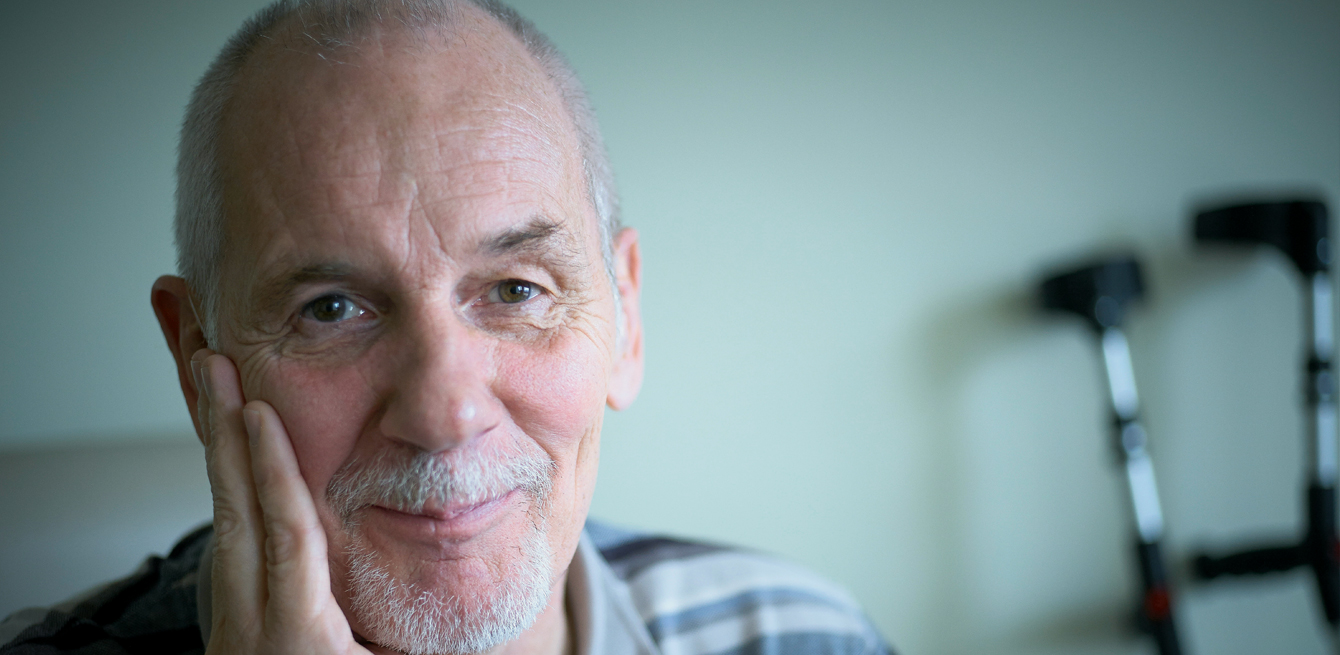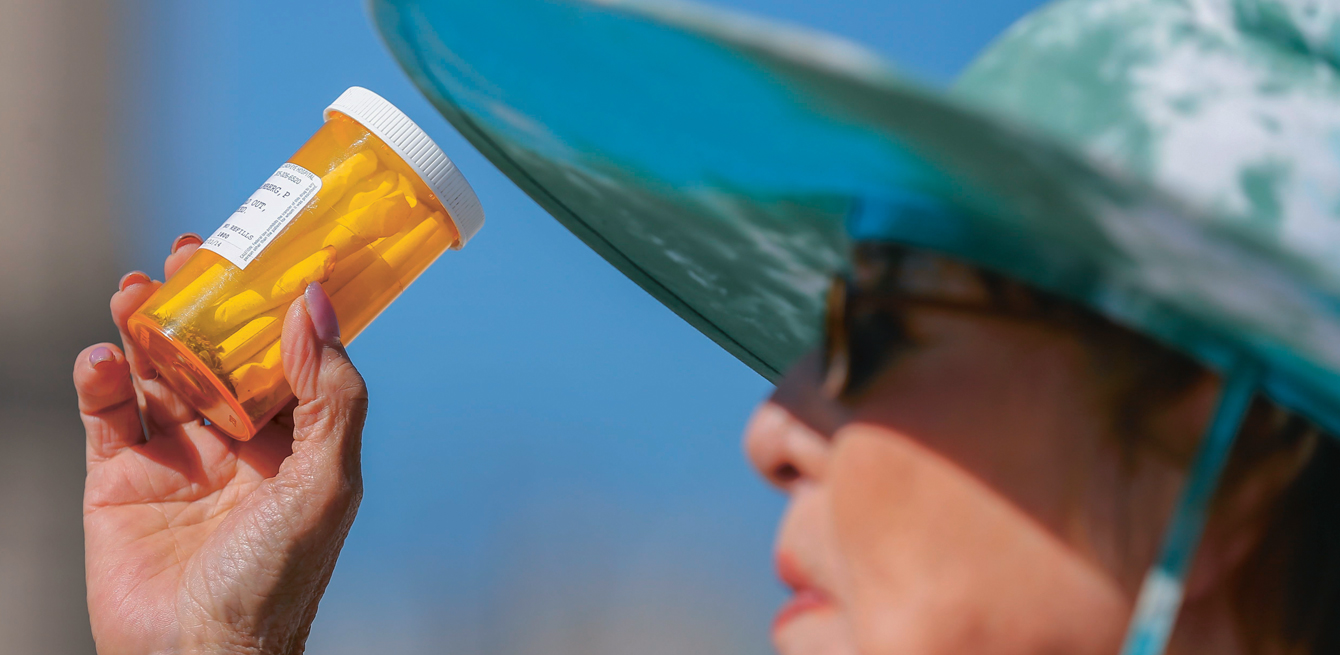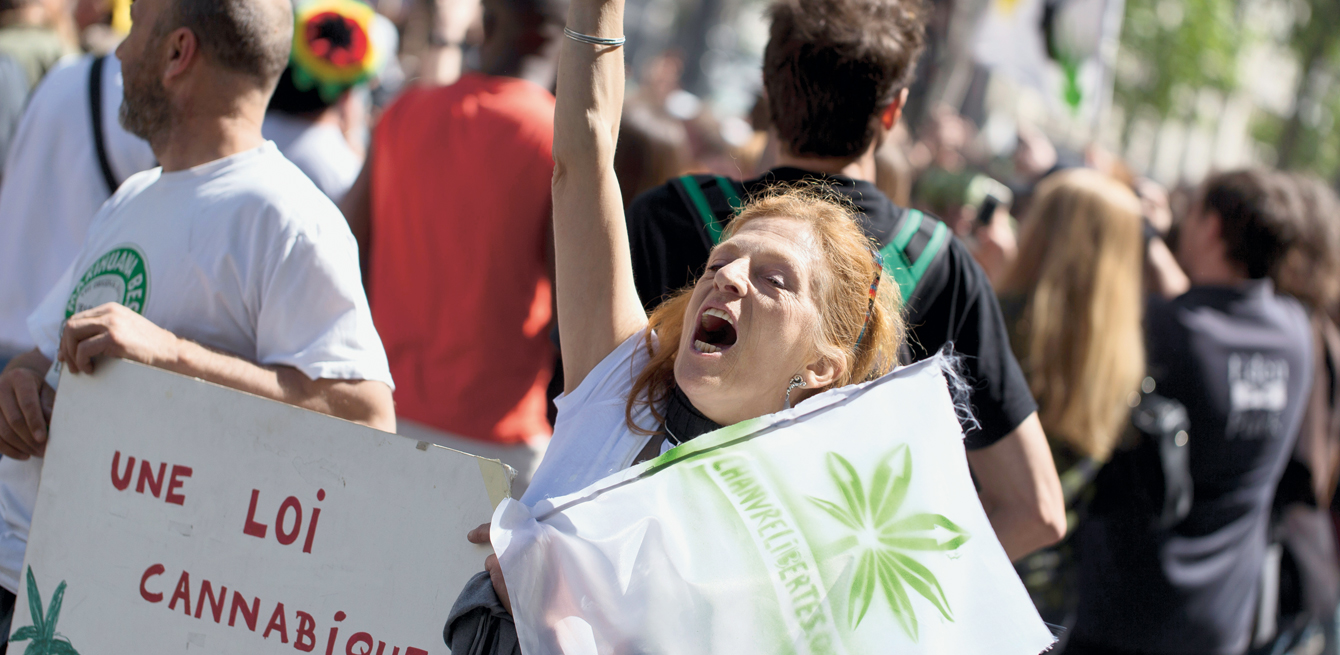
Medicinal marijuana, although legal in switzerland, is still hard to come by. patients and politicians are fighting for the plant to be recognised and reimbursed like any other medication.
When Philippe Süsstrunk opened his eyes that night back in March 2013, the first thing he noticed was the cold. His clock said 3:00 a.m. He then realised that his body had been shaken by a series of endless spasms and cramps. He felt as though he’d turned into a block of wood. “I couldn’t move,” says the 62-year old resident of the Jura Canton. “I didn’t know what to do.” Philippe had to wait thirty minutes for the attack to finally subside. By that time, he was exhausted and in tears. He had never experienced anything like it.
Philippe Süsstrunk was diagnosed with multiple sclerosis in 1990, and he used to suffer regularly from spasms and cramps. His doctor tried to reduce the intensity of these incidents using various medications, without success.
“He kept increasing the dosage,” Philippe says. “We had reached the maximum limit. I wasn’t allowed to take any more.”
But one day shortly after his night-time flare-up, his doctor had him try a new miracle product, cannabis tea. “It changed everything,” the patient says.
“My spasms and cramps disappeared almost instantly. I could once again lead a normal life.”
The Chinese, Egyptians and Indians began using cannabis for medicinal purposes back in the 8th century, followed by the Greeks and Romans. In the Middle Ages, the rest of Europe began using the plant to treat cholera, tetanus, rheumatism, migraines, whooping cough and even asthma. But it was not until the 19th century that the use of medicinal cannabis really took off, including in Switzerland. In the early 20th century, Bern became one of the main cannabis research centres.

ATLANTA, GEORGIA, February 2015
But as the pharmaceutical industry grew, cannabis began to be ignored and developed a bad reputation. In 1951, cannabis was officially listed as a narcotic under Swiss law. A few years later, it had disappeared from the list of medication available to Swiss patients.
An amendment to the Swiss Narcotics Act, supported by the Committee for Social Security and Health of the Council of States, authorised the use of cannabis for medical purposes as of 1 July 2011. “We can now prescribe medical cannabis for certain people,” says Jacques Besson, chief of the Service of Community Psychiatry at Lausanne University Hospital (CHUV). “If a patient thinks the product is necessary, the attending physician can file a request with the Swiss Federal Office of Public Health (FOPH).” But only a handful of medications, such as Marinol pills, are legal in Switzerland.
In 2008, a pharmacist in Bern obtained authorisation to make cannabis tincture using hemp synthesised in a laboratory. That variety contained cannabidiol (CBD) but no tetrahydrocannabinol (THC). “CBD is a compound specific to cannabis. It boasts medicinal properties and can relieve patients without the mind-altering effect,” says Barbara Broers, chief of the Dependencies Unit at Geneva University Hospitals. Then in 2011, authorisation was granted to develop a natural cannabis preparation containing THC. Pharmacies require special authorisation to deliver these products. “It’s still an exceptional treatment, and the procedure is complex,” the expert says. Medical cannabis is currently available in various forms on the Swiss market, as sprays, tinctures, and pills.

Ryan Douglas, the “master grower” of the ontario-based company tweed, watering hundreds of marijuana plants. He is one of the twenty or so authorised marijuana producers who has been issued a licence from Canada Health.
Philippe Süsstrunk’s doctor managed to get him a medication made with synthetic cannabis in the form of a tincture. “I would take seven drops in the morning, at midday and in the evening,” he says.
But the relief was short-lived. The drops of dronabinol cost 560 Swiss francs per month, and his health insurance refused to cover his treatment. “My insurance company explained that the treatment was not one of the medications that Swissmedic believed to be reimbursable,” Philippe explains. “And I couldn’t pay out of pocket. I’ve been on disability for several years.”
Without the money to pay for it, Philippe Süsstrunk stopped buying his medication at the pharmacy and took to looking for cannabis on the black market. He’s tried making biscuits or steeping it in alcohol to make his own tincture, but the effects are not the same. “It was too hard to control the dosage,” he says. “The THC content in cannabis found on the street varies too widely. The effect would be too strong at times and at others too light.”

Paris, May 2015
Philippe Süsstrunk did not give up. “I fought with my health insurance for months to get them to reimburse the medication,” he says. A few months ago, they finally agreed to reimburse his tincture of cannabis. “I argued based on Article 71b of the Order of Health Insurance, which stipulates that a product can be reimbursed if no other medication on the market has the same effect.” And ever since, life has been wonderful for Philippe Süsstrunk. “I can live again,” he says, relieved. “I just have a small knot remaining in my right leg.” To treat that, his doctor has recommended taking a few extra drops of tincture of cannabis.
He’ll feel better.
Today, the FOPH authorises patients to obtain medical marijuana for a limited number of conditions. “The FOPH has been more flexible in the past year or two, including other conditions such as epilepsy,” says Barbara Boers. “But it’s still a complicated process.”
The Saint Gallen
National Council member Margrit Kessler moved a motion in December 2014 for the
Federal Council
to “examine, in a scientific pilot study... when cannabis can be used in its natural state for medical purposes as an alternative to synthetic cannabis or tincture
of cannabis.” “Medical cannabis is too expensive, and the preparation process is currently too complicated,”
Margrit Kessler says. The National Council member would like the Federal Council
to explore the potential of this product
that we have “known about for a long
time but on which little research has been done”.
The Federal Council replied in February 2015 that the issue does not fall within its powers, stating that it is the responsibility of the industry to conduct scientific research, to create the conditions required for natural cannabis to be authorised as a medication and covered by the Swiss healthcare system.
And that’s the whole problem. “Marijuana research needs to catch up,” says Jacques Besson. “Few companies or medical institutions have studied marijuana because of the stigma attached to it.” But things are changing. A growing number of organisations and countries are financing and authorising medical cannabis. “Several studies have shown the potential of cannabis in relieving symptoms of serious illnesses, such as Crohn’s disease and cancer,” says Barbara Broers.
The amendment
to the Swiss law in 2011 offered fresh hope. New products are gradually hitting the market,
such as Sativex, a spray made with natural cannabis. But broadening access to
these products remains a heated debate. “Even within my field of community
psychiatry, my colleagues don’t agree on the issue of legalising marijuana,”
says Jacques Besson. “Some favour regulation as a policy to reduce risks. But
others are concerned
that legalisation would increase access to the drug and complicate treatment of
psychiatric diseases.” ⁄

Germany legalised medicinal cannabis in 2008. Three medica-tions are authorised in the country: nabiximols (Sativex®), dronabinol (Marinol®) and nabilone (Cesamet®). Only Sativex is reimbursed for patients with multiple sclerosis. Buying cannabis seedlings in a pharmacy and growing the plants att home, which is less expensive, has been legal since 2012. This requires special authorisation from the Federal Office of Narcotics (Bundesopiumstelle), which has been granted to about 200 patients.

Medical hemp was legalised in the netherlands in 2003. Bedrocan, the only company that grows medical cannabis seedlings, is based in the country. The company produces four varieties of natural cannabis, which contain different levels of THC. Distribution is managed by the office for medicinal cannabis, which comes under the dutch department of health. Bedrocan’s products are costly, between €7 and €12 per gram. About 1,200 patients use medical cannabis in the country.

Canada has the most developed system for legal medical marijuana. This therapeutic substance has been legal since 1999, and the government authorises patients to grow marijuana plants in their home. “Doctors and nurses can prescribe it for any condition,” says Dr Mark Ware, Director of clinical research in the Alan Edwards pain management unit at Mcgill University. But, in 2014, the law restricted this access. Nearly 4,000 people take medical marijuana in the country.

At the federal level, canabis is considered illegal and dangerous. But several states, including Colorado, Washington, Oregon, Alaska and the District of Columbia, have legalised marijuana in recent years. Twenty-one have legalised medical canabis. Some states plan to legalise certain compounds in canabis such as cannabidiol (CBD), but refuse to authorise tetrahydrocannabinol (THC).

France issued its first decree authorising the medical use of cannabis and cannabidoids in 2013. Patients can be granted temporary use authorisation to obtain the substance. But only a limited number of medications are authorised. Sativex spray was not released on the market until 2015. The French National Agency for Medicines and Health products Safety has only granted about 100 authorisations since 2001.